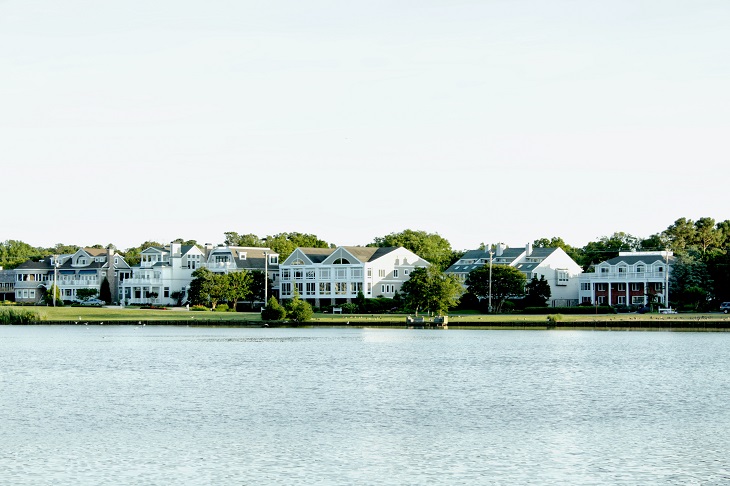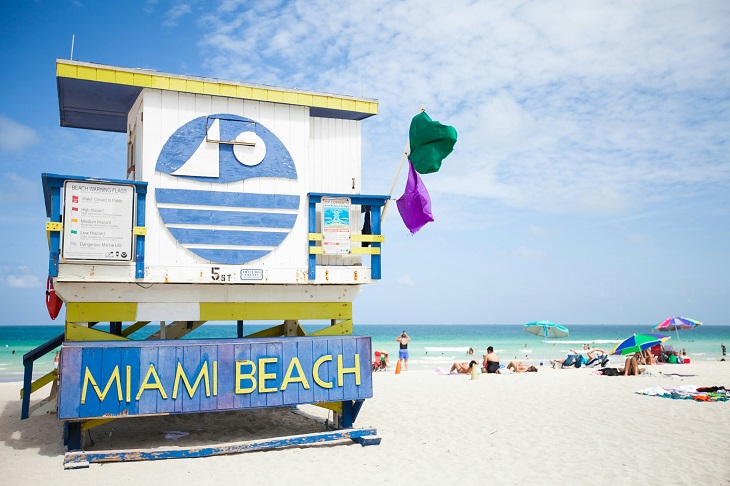Traveling is one of those constants that offer experiences and thrills, including exploring new destinations, immersing ourselves in different cultures, and discovering hidden spots wherever we visit. However, for individuals with disabilities or mobility issues, the prospect of embarking on such adventures has a set of challenges.
The reality is that the lack of accessibility in many tourist attractions and cities around the US poses significant challenges for travelers with disabilities. The barriers to travel often feel unfair, from inaccessible transportation systems to non-adaptive accommodations and limited options for experiencing popular tourist sites.
Fortunately, there is hope thanks to the growing awareness of the need for greater inclusivity and accessibility in the travel industry. Local governments, organizations, and advocacy groups have been working tirelessly to address these issues and make travel more accessible for everyone.
In this comprehensive guide, we’ll delve into some of the top handicapped-accessible tourist destinations in the USA. Whether you’re planning a family vacation, a solo adventure, or a romantic getaway, these destinations promise unforgettable experiences without limitations. Many destinations have made significant strides to ensure accessibility for travelers with disabilities.
Top Handicapped Accessible Tourist Destinations in the USA
The Big Apple – New York City, New York
New York City, often referred to as the “Big Apple,” has a fast-paced atmosphere, but the city is committed to ensuring accessibility for all visitors, including those with disabilities.
Central Park is a good example of inclusivity, offering accessible pathways, wheelchair-accessible restrooms, and designated parking areas. Visitors can enjoy the pathways through the park’s lush greenery, take in the views from accessible viewpoints, or even attend guided accessible tours.
The Statue of Liberty, a symbol of freedom and democracy, also welcomes visitors of all abilities with accessible ferry services and designated viewing areas. Meanwhile, Broadway theaters provide accessible seating options, assistive listening devices, and sign language interpretation for patrons with hearing impairments.
For more information, check out our Understanding Handicap Parking Laws in New York blog post.
The Sunshine State – Orlando, Florida
Orlando, often dubbed the “Theme Park Capital of the World,” is home to renowned attractions such as Disney World and Universal Studios. The city has made significant updates to ensure accessibility for travelers.
Theme parks in Orlando offer many accessibility features, including wheelchair-accessible ride entrances, accessible restrooms, and specialized accommodations for guests with sensory sensitivities. Additionally, hotels and resorts in the area provide accessible accommodations, with features such as roll-in showers, grab bars, and adjustable beds.
Beyond the theme parks, Orlando has other accessible attractions, such as the Orlando Science Center, where visitors can engage in hands-on exhibits and interactive experiences. Accessible transportation options, including wheelchair-accessible taxis and shuttle services, make it easy for travelers to navigate the city with ease.
For more information, check out our “Traveling in Florida Guide” blog post.
The Golden State – San Francisco, California

San Francisco, with its iconic landmarks like the Golden Gate Bridge, is also one of those destinations on the West Coast of the USA that visitors can enjoy. From the Golden Gate Bridge to Alcatraz Island, the city offers many accessible attractions.
For example, the Golden Gate Bridge features accessible viewing areas and designated parking spaces for visitors with disabilities. Meanwhile, Alcatraz Island offers accessible ferry services and guided tours, allowing visitors to explore the infamous prison and learn about its storied history.
In addition to its landmarks, San Francisco is known for its commitment to accessibility in public transportation. Wheelchair-accessible buses, trains, and cable cars make it easy for travelers to explore the city’s diverse neighborhoods and cultural attractions.
For more information, check out our “Traveling in California Guide” blog post.
The Capital City – Washington, D.C.
The capital city of Washington, D.C. is steeped in history, culture, and political significance. From the iconic monuments of the National Mall to the world-class museums of the Smithsonian Institution, the city offers a wealth of accessible attractions.
The National Mall, a sprawling green space flanked by iconic landmarks such as the Lincoln Memorial and the Washington Monument, is fully accessible, with paved pathways, wheelchair-accessible restrooms, and accessible parking options. Meanwhile, the Smithsonian Museums offer comprehensive accessibility services, including wheelchair rentals, assistive listening devices, and sign language interpretation.
In addition to its cultural attractions, Washington, D.C. also has accessible public transportation options, including wheelchair-accessible buses and metro stations. Accessible tour services and visitor centers provide valuable resources and assistance for travelers with disabilities, ensuring a seamless and enjoyable experience.
For more information, check out our “A Guide to Disabled Parking in Washington DC” blog post.
Grand Canyon State – Arizona

Arizona has many tourist destinations that are accessible to individuals with disabilities, ensuring inclusivity in experiencing the state’s natural and cultural attractions. The Grand Canyon National Park offers wheelchair-accessible trails and viewpoints, including Mather Point and Yavapai Point on the South Rim, while Sedona provides accessible trails and viewpoints showcasing its famous red rock formations. In Phoenix, attractions like the Desert Botanical Garden offer paved paths and wheelchair-accessible tram tours, while Tucson’s Arizona-Sonora Desert Museum features wheelchair-accessible trails and exhibits.
For more information, see our “Traveling in Arizona” guide on our blog.
National Parks in the USA
National parks across the United States have made significant updates to the infrastructure to improve accessibility and inclusivity for visitors with disabilities. You can expect places such as Yellowstone to the Grand Canyon to offer unparalleled experiences for travelers of all abilities.
Yellowstone National Park, known for its geothermal features and abundant wildlife, provides accessible trails, boardwalks, and visitor centers. It allows visitors with disabilities to experience the park’s natural beauty up close. Similarly, the Grand Canyon offers accessible viewpoints, shuttle services, and interpretive programs tailored to the needs of visitors with disabilities as mentioned above.
Other national parks, such as Yosemite and Zion, also offer accessibility features, including accessible trails, ranger-led programs, and specialized accommodations. These efforts reflect a commitment to ensuring that all visitors, regardless of their abilities, can enjoy the unparalleled beauty and wonder of America’s national parks.
For more information, check out our “Accessible Attractions and Parking in National Parks” blog post.
Other Locations to Consider
Locations across different cities in the US also offer easy accommodations for travelers with disabilities. Here are a few examples of other places to consider when planning a trip:
- Rocky Mountain National Park: Known for its landscapes and diverse wildlife, Rocky Mountain National Park offers accessible trails, scenic drives, and visitor centers equipped with accessible facilities and services for travelers with disabilities.
- Garden of the Gods: Located in Colorado Springs, Garden of the Gods is a stunning natural landmark featuring towering sandstone rock formations and accessible paved pathways, making it easy for visitors with disabilities to enjoy the park’s beauty and serenity.
- Chicago’s Millennium Park: Home to iconic attractions like the Cloud Gate sculpture (affectionately known as “The Bean”) and the Jay Pritzker Pavilion, Millennium Park offers accessible pathways, restrooms, and seating areas, ensuring a comfortable experience for visitors with disabilities.
- Architectural Boat Tours: In addition, you can explore Chicago’s famous architecture from the comfort of an accessible boat tour along the Chicago River. These tours provide narration and insights into the city’s rich architectural history, with accessible boarding ramps and seating options available.
- Boston’s Freedom Trail: Step back in time and explore Boston’s rich history along the Freedom Trail, a 2.5-mile-long route that passes by 16 historically significant sites. Many of these sites, including the Paul Revere House and the Old North Church, offer accessibility features for visitors with disabilities.
- San Antonio, TX: San Antonio is home to landmarks like the Alamo and the River Walk and provides accessible cultural experiences, historic sites, and scenic river cruises for travelers with disabilities. For example, the Alamo offers accessible pathways and exhibits, while the River Walk features wheelchair-accessible ramps and boat tours.
- Galveston Island: Located along the Gulf Coast, Galveston Island is a popular destination for those who love the beach and being in the outdoors. The island offers accessible beach access points, wheelchair-friendly boardwalks, and adaptive water sports programs for travelers with disabilities to enjoy.
Tips for Travelers with Disabilities or Reduced Mobility
Exploring new destinations can present unique challenges for travelers with disabilities or reduced mobility. From navigating unfamiliar terrain to finding accessible accommodations and transportation, the prospect of planning a trip may seem overwhelming. However, with careful preparation and the right resources, it can be done.
In this section, we’ll provide valuable tips and advice for travelers with disabilities, empowering you to plan and enjoy handicapped-accessible tourist destinations in the USA.
- Plan Ahead: Research your destination thoroughly to identify accessible attractions, accommodations, and transportation options. Many cities and tourist destinations offer accessibility guides or resources online that can help you plan your trip.
- Contact Attractions in Advance: Reach out to tourist attractions, museums, and other venues ahead of time to inquire about their accessibility features and any accommodations they may offer for visitors with disabilities. This will help you plan your itinerary and ensure a smoother experience during your visit.
- Consider Accessible Transportation: When planning your travel arrangements, opt for transportation options that are accessible and accommodating for individuals with disabilities. This may include accessible taxis, rental cars with hand controls, or public transportation services with wheelchair ramps and lifts.
- Pack Accordingly: Make sure to pack any necessary medical supplies, mobility aids, or assistive devices you may need during your trip. Consider bringing extra supplies in case of emergencies, and don’t forget to pack any medications or medical documents you may require.
- Advocate for Yourself: While traveling, don’t hesitate to advocate for your needs and rights as a person with a disability. If you encounter any accessibility barriers or challenges during your trip, speak up and communicate your concerns to the appropriate authorities or staff members.
- Be Flexible: Despite careful planning, unexpected challenges may arise during your travels. Stay flexible and adaptable, and be prepared to adjust your plans as needed to ensure a positive and enjoyable experience.
Handicapped Accessible Tourist Destinations in the USA
Traveling should be a joyous and enriching experience for everyone, regardless of their abilities. It’s about more than just visiting new places; it’s about immersing oneself in different cultures, connecting with people, and creating memories that last a lifetime. For travelers with disabilities, however, the prospect of exploring unfamiliar destinations can sometimes feel daunting. The lack of accessibility in many tourist attractions and cities can present significant challenges, from navigating crowded streets to finding suitable accommodations and transportation options.
Fortunately, by exploring handicapped-accessible tourist destinations in the USA, travelers can prepare themselves and plan their trip accordingly.
Moreover, as awareness grows and efforts to improve accessibility and inclusivity continue, the future of travel holds boundless possibilities for all. From innovative technologies to advocacy initiatives and policy changes, the travel industry is evolving to ensure that everyone, regardless of their abilities, can fully participate in and enjoy the wonders of exploration and discovery. By championing accessibility and inclusivity, we not only enrich the travel experience for individuals with disabilities but also create a more inclusive and welcoming world for everyone. So let’s continue to explore, discover, and embrace the beauty of the world around us, together.
Need more information on disabled parking in the US? From handicapped parking at Yellowstone National Park in Wyoming to handicapped parking for out-of-state visitors in Vermont, we offer a useful bank of detailed topics on the Dr Handicap blog. Check it out today!
Featured image by Quintin Gellar on Pexels.





